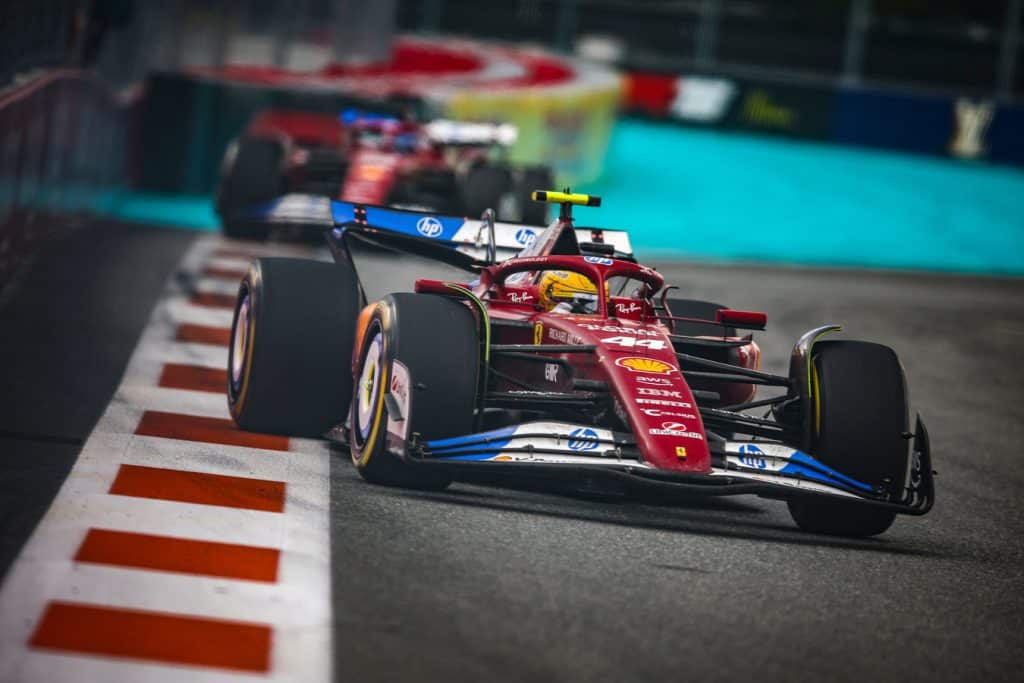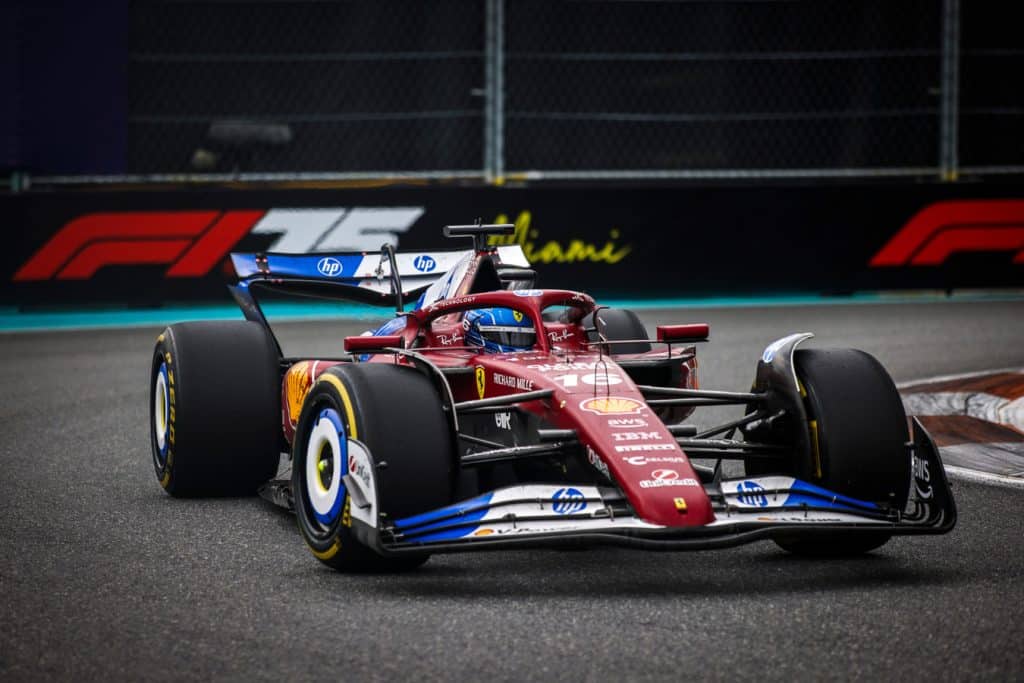Ferrari reached the lowest point of its season at the Miami Grand Prix. The SF-25 is a failure, despite the countless rumors and hopeful declarations.
The bold proclamations from Milan now feel like a distant memory—perhaps just a midsummer night’s dream, or more precisely, a mid-February illusion. The World Championship dreams, the promised competitiveness, and the enthusiasm not seen in over twenty years seem to have vanished in an instant, erased by the ultimate judge: the track. The SF-25, a machine born under the sign of Pisces—or maybe just under the sign of unrealistic optimism—has crumbled upon contact with reality, like a meteor crashing through its own private Grand Prix.

The fight for a measly seventh place between Leclerc and Hamilton perfectly sums up Ferrari’s season start: a total disaster combining technical shortcomings with grandiose and jarring statements that clash with reality—something that never lies. The problem isn’t trying to express potential; the real question on every fan’s mind right now is: does that potential even exist?
At the moment, the answer leans toward a resounding “no,” dictated by the car’s fragile on-track results—light years away from last season’s expectations. The comparison is stark: after six races, the 2024 car had scored 187 points and secured a win (Sainz in Australia), while this year’s tally stands at just 94. But stats and comparisons are the least painful part when the track itself gives the most sobering verdicts.
Ferrari, the only team on the grid to radically overhaul last year’s concept, is paying the price for a new suspension design that fails to guarantee a stable and performant rear end. Instead, it undermines the stability of a car that, in slow corners, performs like a FIAT. In corners where traction is crucial, the SF-25 is helpless and nearly undrivable—like a ship in a storm.
Leclerc’s flashes in Saudi Arabia and Hamilton’s in China are nothing more than mismatched pieces from a thousand different puzzles—no cohesive picture, just scattered ideas poorly merged into a single project. Some still preach patience, but the drivers themselves tell the real story, especially through their frustrated radio messages. They speak to the impossibility of fighting for meaningful positions, while watching teams like McLaren become dominant in just three seasons.
Someone might still believe the next upgrade will be the magic fix, but Ferrari’s current reality tells a different story: yet another failed project, a dream broken after just six races, unlikely to bring joy to the fans this year. The only remaining hope is the Spanish Grand Prix, when flexible wings will be banned—perhaps then, McLaren will look more human to the rest of the grid.
What remains is painfully little: flashes of brilliance from drivers like Leclerc and Hamilton, who do not deserve to be part of a project like this, who shouldn’t be fighting just to score a single point or make it into Q3. What remains is the name of a legendary team—one that, right now, has lost its historical direction. What’s left is a harsh, dissonant tale that’s been dragging on for nearly twenty years. What’s left is just a “we need to understand”—but maybe, deep down, everything is already clear..
Photo: Scuderia Ferrari Gallery

